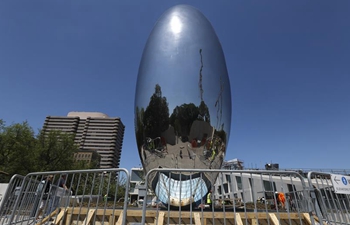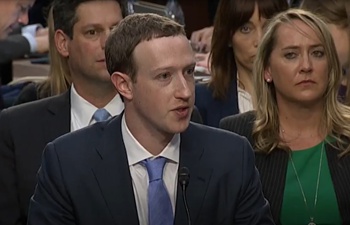WASHINGTON, April 12 (Xinhua) -- Biologists and computer scientists are using artificial intelligence (AI) to tell apart cells that haven't been stained and find a wealth of data that scientists can't detect on their own.
A study published on Thursday in the journal Cell has shown how deep learning, a type of machine learning involving algorithms that can analyze data, recognize patterns, and make predictions, is used to pick out features in neurons and other cells.
It's usually quite hard to look at a microscope image of an untreated cell and identify its features. To make cell characteristics visible to the human eye, scientists normally have to use chemicals that can kill the very cells they want to look at.
The study has shown that computers can see details in images without using these invasive techniques, as images contain much more information than was ever thought possible.
Steven Finkbeiner, a director and senior investigator at the Gladstone Institutes, teamed up with computer scientists at Google who customized for him a model with TensorFlow, a popular open-source library for deep learning originally developed by Google AI engineers.
They invented a new deep learning approach called "in silico labeling," in which a computer can find and predict features in images of unlabeled cells. This new method uncovers important information that would otherwise be problematic or impossible for scientists to obtain.
"This is going to be transformative," said Finkbeiner. "Deep learning is going to fundamentally change the way we conduct biomedical science in the future, not only by accelerating discovery, but also by helping find treatments to address major unmet medical needs."
The deep network can identify whether a cell is alive or dead, and get the answer right 98 percent of the time, according to the researchers.
It was even able to pick out a single dead cell in a mass of live cells. In comparison, people can typically only identify a dead cell with 80 percent accuracy.
Finkbeiner's team realized that once trained, the network can increase the ability and speed with which it learns to perform new tasks. They trained it to accurately predict the location of the cell's nucleus, or command center.
The model can also distinguish between different cell types. For instance, the network can identify a neuron within a mix of cells in a dish. It can go one step further and predict whether an extension of that neuron is an axon or dendrite, two different but similar-looking elements of the cell.
They trained the neural network by showing it two sets of matching images of the same cells; one unlabeled and one with fluorescent labels. This process has been repeated millions of times. Then, when they presented the network with an unlabeled image it had never seen, it could accurately predict where the fluorescent labels belong.
"The more the model has learned, the less data it needs to learn a new similar task," said Philip Nelson, director of engineering at Google Accelerated Science.
"This kind of transfer learning, where a network applies what it's learned on some types of images to entirely new types, has been a long-standing challenge in AI, and we're excited to have gotten it working so well here," said Nelson.
"This approach has the potential to revolutionize biomedical research," said Margaret Sutherland, program director at the National Institute of Neurological Disorders and Stroke, which partly funded the study.













